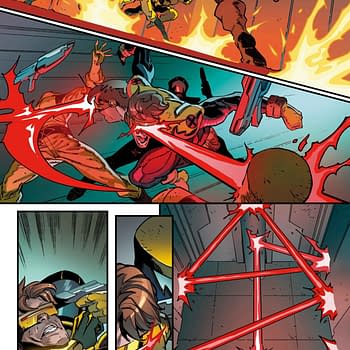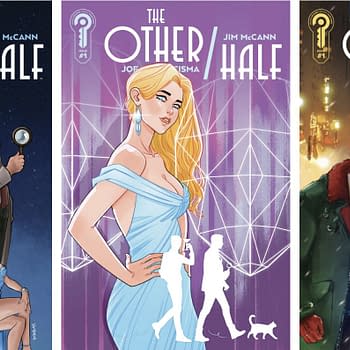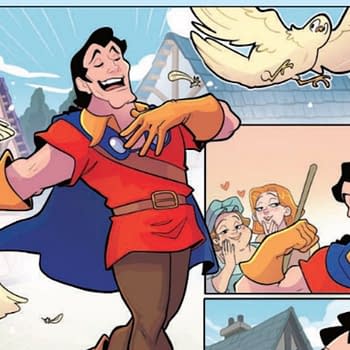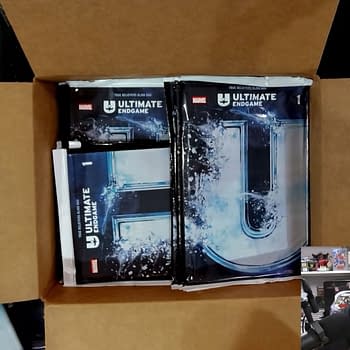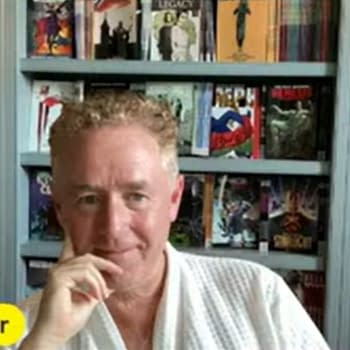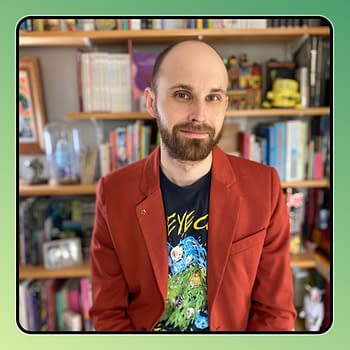Posted in: Comics, Recent Updates | Tagged: Comics, entertainment, graphic novels, Jules Feiffer, Kill My Mother, Liveright Publishing, noir
Femme Fatales Reign Supreme In Jules Feiffer's Kill My Mother
By Cameron Hatheway
When you were younger, did you ever tell your mother that you hated her? That you wished she was dead? You might still feel the same way, and if that's the case I'm sorry this article is reminding you how much you hate the woman who gave birth to you (and your reasons could be completely legitimate, who am I to judge?). I know I hated my mother a few times as a child; not letting me have a video game console, not letting me try out for football, not getting cable for the house, the list goes on. But did I ever wish her dead? Heavens no. In retrospect, growing up in a household that didn't have television or 8-bit pixels to entertain me forced me to gravitate towards reading books and eventually comic books. I love my mother dearly, and thank her for the way she raised me.
But some people don't like their mothers. Some people wish to see them dead. Some people can never forgive their mother for moving on from their murdered father so quickly to a private investigator that she's clearly in cahoots with. That's little Annie Hannigan's reasoning for hating her mother so much, and because of it she's a rebellious little brat running wild in the streets of Bay City in 1933, constantly bossing around her apprehensive partner-in-crime Artie. Welcome to Jules Feiffer's noir-action-romance graphic novel Kill My Mother from Liveright Publishing (available now).
An illustrator, playwright, Pulitzer-Prize winning cartoonist and once assistant to Will Eisner, Feiffer has had a long and prosperous career so far. At age 85, he's showing no signs of slowing down with his latest venture and first graphic novel. Taking place during the Great Depression and World War II, Feiffer's hard-boiled noir story follows several eccentric characters throughout, all unknowingly connected in an ongoing mystery surrounding a missing woman.

Dames, floozies, alcoholic private eyes, leggy-blondes, boxing has-beens, and Hollywood actors make up the offbeat cast, with Feiffer obviously feeling at ease dipping into the pulp novels of decades past that have influenced the graphic novel greatly. Elsie Hannigan is Annie's mother, and works as a secretary to a private investigator Neil Hammond. Elsie's husband was a good cop during prohibition, and because he refused to turn a blind eye like everyone else, wound up dead. Hammond promised Elsie that he would eventually find out what happened to her husband, but in the meantime has her filling out his drunken dictations and running to the store for more booze. Elsie doesn't mind the work, and actually appears to be the brains of the operation while Hammond takes all the credit.
Everything changes one night when a woman walks into Hammond's office and is willing to pay a pretty penny for Hammond to find her missing sister; a blonde over six-feet tall who fancies herself an actress. The strange thing is, the woman in the picture the client gives him looks exactly like her, and denies any relation to the missing woman. This sparks Hammond's interest, because even though he's drunk as a skunk, he knows something is amiss. Meanwhile while Annie and Artie are on the run from a department store security guard, they're rescued by a mute, disheveled homeless woman who happens to be blonde and over six-feet tall. Coincidence? That's what we're led to believe, until another blonde who fits the description is seen in Elsie and Hammond's stakeout. The connection isn't revealed until the very end, in true crime noir fashion, and many people are killed or hurt just trying to figure out the truth along the way.

While Feiffer perfectly captures the look and feel of a grimy metropolitan city during the Great Depression, he also seamlessly transitions the reader to World War II as we see what Elsie, Annie, Artie and the mysterious blondes are up to a decade later. Annie still hates her mother, but has a successful radio show called "Shut Up, Artie!" Now a mother herself to a child that hates her—continuing family tradition apparently—but loves his grandmother Elsie, Annie leads a life of constant travel and writing, letting both her nanny and mother babysit the whining brat. Elsie got out of the private investigator lifestyle and worked her way up to the position of Executive Vice President of Image Security and Maintenance at Pinnacle Studios, keeping the dirty laundry of the stars out of the press. While she doesn't have a personal life, let alone time to look for love, she finds herself falling for Hugh Patton, the hottest actor in Hollywood. As it turns out, he's reciprocating those feelings.
A U.S.O. show out on the island of Tarawa in the South Pacific is the setting of the final act of the graphic novel, having all of the characters rendezvous on the remote island for their own reasons. One wants the competition of a movie role grievously wounded, another wants Captain Arthur "Artie" Folsom to drop a lawsuit against the program "Shut Up, Artie!" for libel and slander, and one just wants a relationship to blossom. The events that follow become chaotic, intense, and tragic. But the mystery of the missing blonde woman isn't what you expect in the slightest.

The women of Kill My Mother are by far the strongest characters, and most fascinating to follow. The contrast between them and the opposite sex is fascinating, for the men in the book are frequently drunk, delinquents, or cowards (in some cases all three), mere hindrances to the women getting what they want. Yet they can take a punch just as well as any other man, and be equally as dangerous. While characters like Annie never seem to shed their old ways, others like her mother Elsie become stronger throughout the years.
Feiffer's gritty, loose style is incredibly reminiscent of Eisner, Eddie Campbell, and Joe Kubert, with a sprinkle of Frank Miller for good measure. Every sinister wrinkle can be seen on the corrupt cops, every long and imposing shadow in the alleys. The use of watercolors is absolutely stunning, and brings even more intricate details to life. While primarily black and white, there are four different shades of color executed throughout, popping when need be.

Feiffer completely encapsulates all the things that made crime-noir stories successful and popular, while at the same time adding his own twist to the genre. His characters are fresh and original, giving the reader a special connection with them from start to finish. The overall tone is dramatic, but the dry wit throughout keeps it lighthearted enough for readers from all walks of life to enjoy. I definitely expect to see this receive a few Eisner nominations later this year.
Feiffer is currently hard at work on a prequel to Kill My Mother, with no concrete release date yet. It does beg the question however; if an 85 year-old man can publish a graphic novel, what's stopping you from doing the same?
Kill My Mother (Liveright Publishing)
By Jules Feiffer
160 Pages, $27.95
Hardcover
Cameron Hatheway is the host of Cammy's Comic Corner, an audio podcast. You can hire him to investigate whether your fly is open on Twitter @CamComicCorner.











